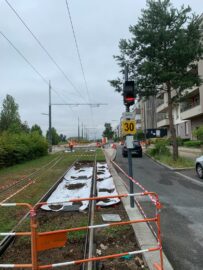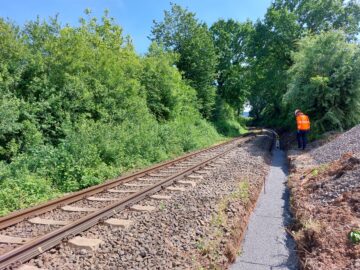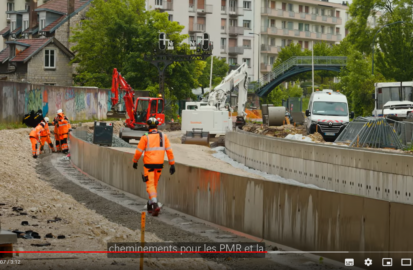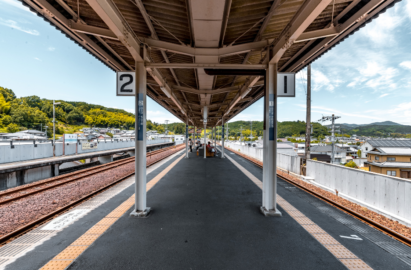RAILWAY CIVIL ENGINEERING AND SIGNALING
This area of expertise is divided into two branches. On the one hand, civil engineering, which covers work on all the structures and networks along the tracks. On the other, signalling, which involves installing all the technical equipment designed to ensure that trains run smoothly and safely.
Railway civil engineering
Defined as “the art of construction”, civil engineering mobilises a large number of specialised employees within ETF.

One of ETF’s core businesses in this sector is civil engineering for signalling and telecommunications. These are all the cables, buried or flush with the ground, that run along the tracks and make signalling and rail communications possible.
More recently, ETF has extended its activities to include platform work to support station development. Between the design, construction, raising, fitting out and even lengthening of platforms, the agents work in the field to the millimetre!
Another field of action is railway workshops and washing areas, where ETF combines its expertise in concrete track with that in networks and construction.
Signalling
Managed from the various signal boxes spread across the entire rail network, signalling is a rigorous sector involving around forty ETF employees. It comes into play once the civil engineering work has been completed, and is organised into two branches:
- “on-station” signalling (within buildings)
- “field” signalling, visible along the tracks (traffic lights, level crossings, etc.).
Directly linked to rail traffic and dependent on commercial traffic, these teams work on demanding sites with very limited working hours. Whether you’re a wirer, signalling fitter or team leader, the Signalling sector requires a wide range of technical skills, including the ability to work as part of a team, manage contingencies and handle equipment that complies with very specific regulations.




